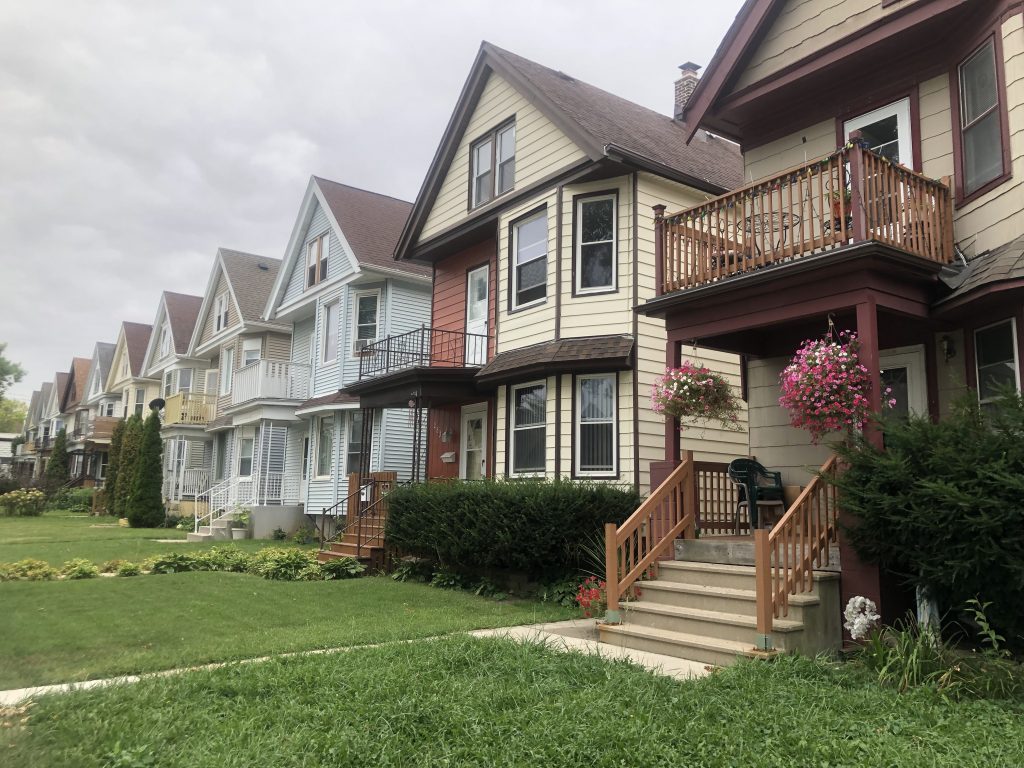County Gets $50 Million for Rent Assistance
U.S. Treasury allocated additional funds provide emergency aid for low-income renters.

Houses on the 2900 block of S. 11th St. File photo by Jeramey Jannene.
Milwaukee County Executive David Crowley recently announced that the U.S. Treasury has allocated $50 million to the county for emergency rent assistance payments.
Housing officials at the county and a non-profit involved in distributing the emergency assistance say the new funding is critical to continuing the program throughout the rest of the year. The county has been spending on average $1 million a week. “Which is a ton of money, but it really demonstrates the need,” said James Mathy, administrator of the Milwaukee County Housing Division.
Most rent assistance payments are going towards paying down rental arrearages that have accumulated throughout the COVID-19 pandemic. But the scale of the demand for rent assistance outlines just how many people struggle to maintain stable housing, a problem which predated the pandemic.
Deb Heffner, housing strategy director for Community Advocates, told Urban Milwaukee that the rate of applications coming in for assistance has never really let up. “We continue to receive, on average, 300 applications a week,” she said.
Her organization has a queue of about 5,000 applications under review, many of them families that continue to need assistance. “We’re seeing a lot of re-applications,” she said.
The new funding, she said, is critical to processing and paying applications. At the beginning of this month, Community Advocates reported to the county that it had approximately $1 million left of a $30 million contract. Meanwhile, there were nearly 2,000 applications that had been approved but not paid out. This group represented an estimated $11 million in rent assistance payments, according to Heffner.
Heffner said Community Advocates acknowledge the delays and understand how distressing they can be: “Obviously to a family that’s afraid of losing their home, in the moment, a day feels like a year.”
As stewards of millions of dollars, there are requirements and due-diligence that necessarily slow down the payments. But the biggest cause of delays, she said, is simply not having the money to make payments. This is why the new funding is key to continuing the program and working through the queue of applicants hoping for assistance.
There are a couple pots of money from which local governments receive rental assistance funds. Where the money comes can impact (1)how long governments can run the program and (2)how long tenants can receive payments.
Emergency Rental Assistance (ERA) programs have been funded through federal legislation including the CARES Act, the Consolidated Appropriations Act of 2021 (a combined pandemic relief bill and spending bill) and the American Rescue Plan Act of 2021 (ARPA).
ERA 1 funding allows the county and Community Advocates to provide up to 15 months of rental assistance, but with ERA 2, they can provide up to 18 months, Heffner said. Part of the funding is also going toward case managers that work with the families throughout their time on assistance to try to address the root problems that leave them struggling to pay rent.
The stimulus bills opened up new sources of funding for rental assistance. Mathy and Heffner said the need for this type of assistance predated the pandemic, and will remain after these unprecedented funds are spent.
Mathy said the common refrain in the county’s housing division is that “Housing is health.” The idea, he said, is that housing is a key social determinant of health, the foundation necessary for addressing other problems that people may be facing.
The hope, he said, is that the federal government will be persuaded by all the data local governments have been able to collect about the importance of stabilizing housing and a sustainable, long term source will be made available.
Political Contributions Tracker
Displaying political contributions between people mentioned in this story. Learn more.
























